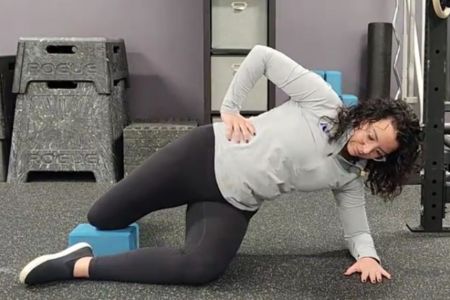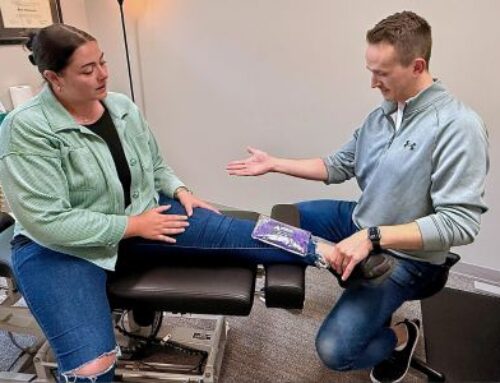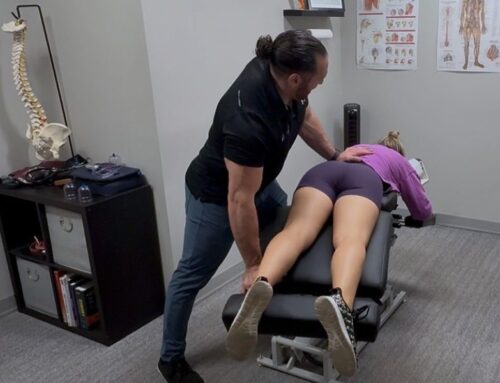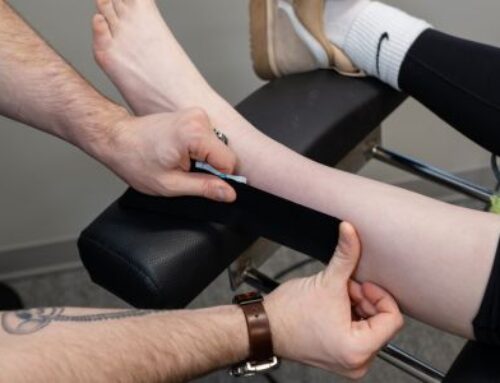If you’re looking for support for SPD during pregnancy, you are not alone. Symphysis Pubis Dysfunction (SPD) is common and can cause intense pain and daily frustration.
SPD is a type of anterior pelvic girdle pain. It happens when the pubic symphysis joint becomes irritated, often due to uneven loading. Pain is usually felt in the front of the pelvis. It may radiate into the thighs, hips, or lower belly.
Movements like walking, rolling in bed, or single leg movements can trigger pain. Although the blame for pregnancy related pain has been placed on the hormone, relaxin, the research does not support this. Recent research shows that pain is often related to musculoskeletal imbalances and biomechanical changes during pregnancy.
Why Adductors Matter for SPD
The adductor muscles of the inner thighs attach directly to the pubic bone. They help stabilize the pelvis and control leg motion.
During pregnancy, some may underuse these muscles due to postural changes like anterior pelvic tilt and external hip rotation. Others may overuse these muscles as compensation. Either pattern can lead to strain at the pubic symphysis.
Deep adductors, like adductor magnus, work with the hamstrings and glutes. Together, they help stabilize and rotate the pelvis. Hamstrings or glutes that may be weaker can make adductors do more than they should. This creates extra pull on the pubic joint.
One way to access deep adductors is by creating a slight posterior pelvic tuck. This position reduces anterior pelvic tilt and improves muscle recruitment. It also helps reduce pressure on the pubic symphysis. This is one small step in offering support for SPD during pregnancy.
Daily Modifications to Reduce SPD Pain
- Sit while dressing or putting on shoes to avoid standing on one leg.
- Swivel both legs together to get in or out of the car.
- Roll over in bed with a gentle core engagement, with knees together, for extra pelvic support.
Acute SPD: Focus on Relaxation and Alignment
In the early phase, prioritize breathwork, mobility, and pelvic floor awareness.
-
Diaphragmatic Breathing with Pelvic Floor Imagery
- Lie on your back with knees bent.
- Inhale deeply, allowing the belly and ribs to expand and feeling the pelvic floor muscles gently expanding and relaxing.
- Exhale while imagining the pelvic floor gently lifting toward the diaphragm.
- This downtrains tension and supports nervous system regulation.
-
Supported Child’s Pose
- Knees wide while hugging a bolster or pillows for support.
- Breathe deeply to encourage pelvic floor and adductor release.
- Stay here for 1–2 minutes with slow breaths.
-
Side-Lying Adductor Squeeze
- Place a pillow or both fists between your knees.
- Gently squeeze your knees toward each other and hold for 3–5 seconds. Exhale as you squeeze and inhale as you relax.
- Repeat 5–10 times to activate adductors without stress.
When Pain Decreases: Rebuild Strength and Stability
Gradually introduce strength to support the pelvis and reduce recurrence.
-
Modified Copenhagen Plank
- Lie on your side with your bottom knee bent in front of you, and your top knee on a couch or bench.
- Push the top knee into the couch or bench. Lift hips and hold for 2-3 seconds. Exhale as you lift to help with core engagement..
- Strengthens adductors while supporting the core.
-
Supine Pelvic Tuck + Adductor March
- Lie on your back with knees bent and feet flat.
- Place a ball between your knees.
- Gently tuck the pelvis and lift one foot, keeping the ball squeeze.
- Promotes adductor and core coordination.
-
Wall Sit with Adductor Squeeze
- Sit against a wall with a pillow between your knees.
- Gently squeeze and hold.
- Engages adductors, glutes, and hamstrings together.
Chiropractic and Clinical Support for SPD
Prenatal chiropractic care, especially the Webster Technique, can improve pelvic function through reducing joint strain and improving comfort.
Combining chiropractic with tolerated exercise provides well-rounded support for SPD. Book here with one of our prenatal providers to assist you!
Empowerment Through Education and Movement
SPD can be overwhelming and painful, but it is not something you just have to endure. With the right tools: movement, body awareness, and clinical support, you can significantly reduce pain and improve your daily function. Let’s create support for SPD, and in doing so, slowly move away from fear and into empowerment.





